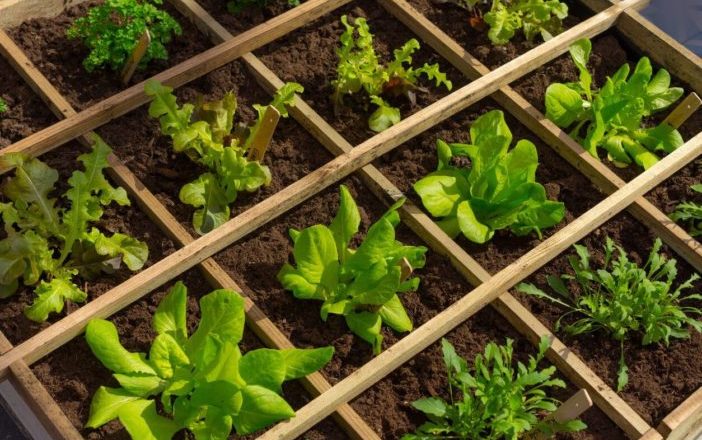Square foot gardening can be an excellent way to produce a lot of food in a compact space. Added benefits come from the common Square foot gardening trend of cobbling different plants together – essentially companion planting and increasing diversity – and creating permanent beds we won’t be stepping on and compacting.
We can get those benefits even if we don’t lay things out exactly like the typical square foot gardening guide, to include using sub-irrigated planters and much smaller containers, or tweaking the widths and lengths of our beds.
There are, however, some aspects of square foot gardening that we may want to consider from self-reliance and longevity perspectives, as well as our physical capabilities and the cost, both initial and ongoing.
Square foot gardening requires rich mixes
Square foot gardening relies on a pretty specific mix for its success, as do systems like Eden style gardening and some of the bio-this and bio-that methods.
In the case of square foot gardening, Mel’s Mix (the creator) calls for one-third compost, peat moss, and vermiculite.
That can be an expensive starter (8cuft total per 4x4x0.5’ box).
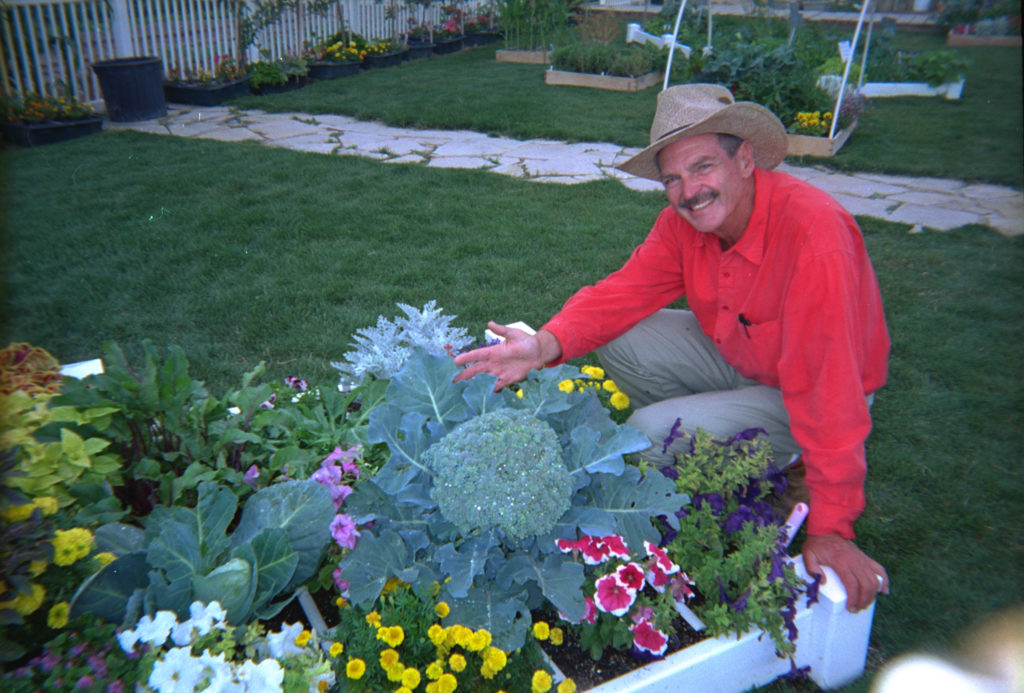
Mel Bartholomew is the creator of the square foot gardening system.
We can substitute some of the components, and it doesn’t need to be entirely replaced every year, but without that specific light, moisture-retentive, and nutrient-rich blend, beds can’t support super-dense plantings or the larger, heavy feeders and water-suck crops.
The specific crops we grow, the number of turns and season length for succession crops, and our rainfall/irrigation will impact the nutrients removed from our beds. Some can get away without revitalization for 3-4+ years without any nutrient-related problems. Others will start seeing issues even in the second growing season.
By location and use, it can take 2-5 years to start seeing reductions in plant vigor and yield due to soil structure.
Then growers – especially preppers – have to consider how they’re going to maintain that mix.
Square foot gardening Mix Makeup & Substitutes
Vermiculite will last the longest without breaking down and is absolutely necessary to maintain aeration and drainage in mixes of 1/4 to 1/3 peat. Sand can help fill the soil-lightening role of the inert vermiculite.
Compost is an all-in-one winner for the garden, contributing both positive soil structure and nutrients. The more varied our compost components, the wider the ranges of nutrients available to our plants. Compost is the most quickly exhausted portion of the square foot gardening mix, but we have plenty of nutrient and structure rejuvenators available.
We can create our own compost or have worm bins for castings and leachate/tea, which we can use as liquid fertilizer or add to the top as mulch.
A patch of comfrey under some small fruit trees or in a planter can also be either minced as a feed-back mulch, composted, or soaked into tea. (Don’t get roots or seeds into beds or compost.)
Rabbits offer excellent manure for immediate incorporation and compostable litter. Other livestock wastes can also be used, but most have to mature for 6-15 months.
The peat moss is an important component, too. It not only holds several times its weight in moisture and releases it slowly, but it’s also pretty highly acidic (4.2-4.5 pH).
That acidity is a commonly overlooked aspect in substitutions.
Most of our edible annuals and many perennials require a mildly to distinctly acidic substrate pH. Vermiculite and compost are both in the near-neutral range, with vermiculite’s pH variable from 6.0-9.5 pH by source and increasingly alkaline over time.
If we use coir and winnowed hulls to increase soil structure instead of tapping sphagnum bogs, we also need to have some way to offset the hydration needs and maintain pH.
Pine or oak leaf mulches can maintain both pH and soil structure, but only as they start breaking down. Olla-style or drip-from-reservoir irrigation can help mitigate dry-out and labor without sphagnum moss’s retentive capabilities.
Square foot gardening Shape & Size
Mel’s square foot gardening standard is based around a 4×4 grid of 1’ squares, but we’re not locked into it. Square foot gardening techniques can be applied to any shape we like, including planters. In fact, we may want to mod that shape even if we have space for it.
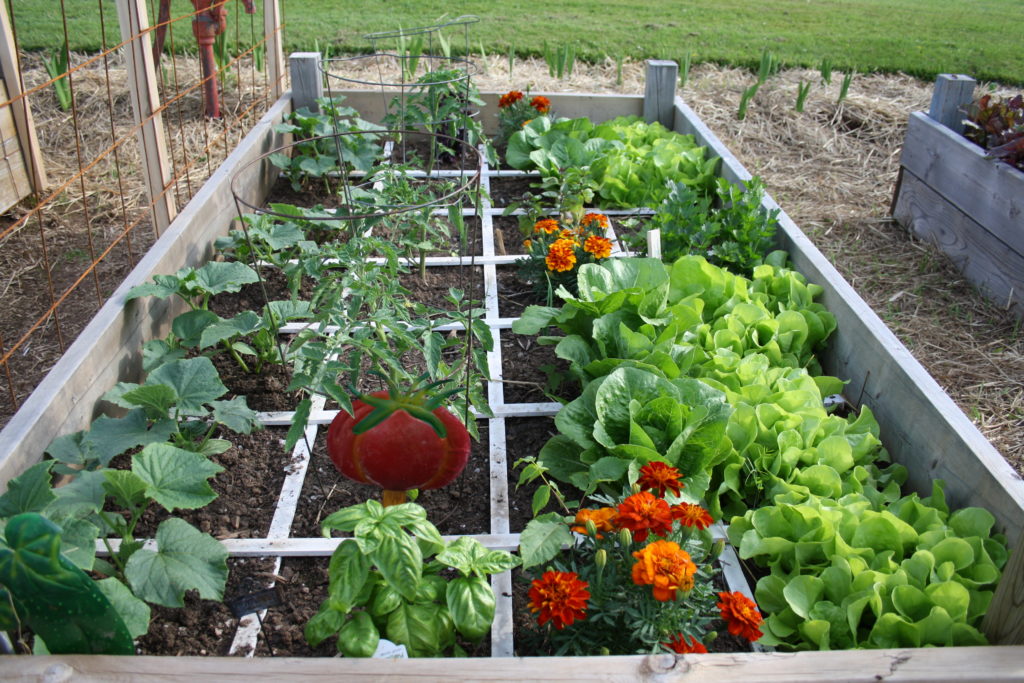
Square foot gardening beds are broken down into 1 foot squares.
The 4×4’ design offers a nicely dense ratio of planting space to the walkway area. Four-foot stretches are a pretty common suggestion for the max width of a bed, under the proposal that most people can fairly readily reach the two feet to the center for planting, weeding, watering, and harvest.
In practicality, not everybody can readily make that reach.
There’s a reason many market and sustenance gardeners and professional growers work off 30-36” beds.
To test it out, snag a freebie wooden shipping pallet or baby pool, and see how easy it is to play around with the middle without leaning too hard on the verges. (They have numerous uses if we don’t want them for our gardens )
If we already built your raised beds for square foot gardening and find we can’t easily reach them, we can reallocate the centers for things that need less care or are easier to reach.
Options include filling that interior 18-24” with a potted or bottomless container for a pollinator, mosquito-repelling, or resource or ornamental plant, or even dwarf berry or fruit tree or shrub.
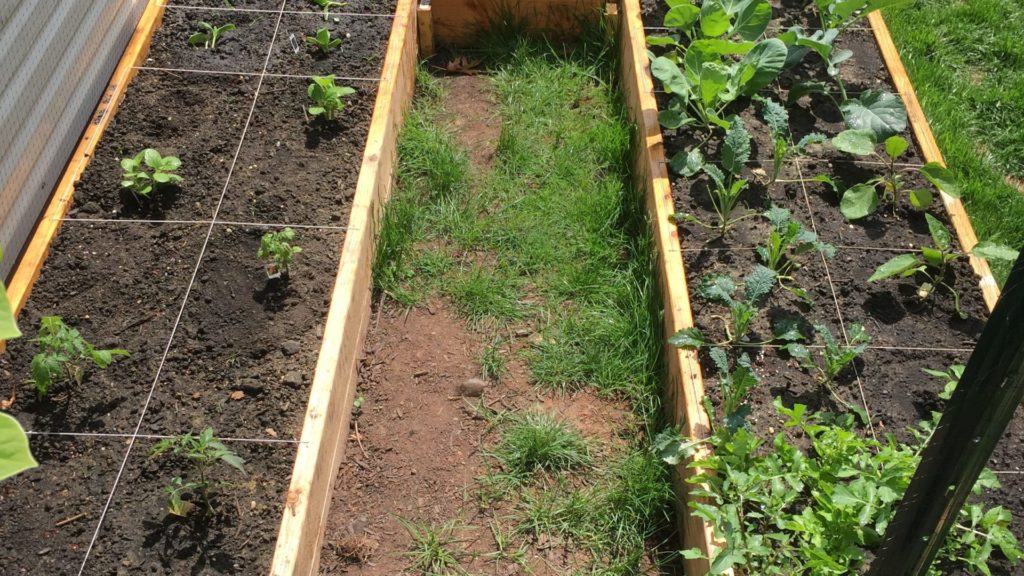
There are many options for how your square foot gardening beds can be configured.
We can also use the space for a composting tube, irrigation bucket and lines, birdbath, bug motel, or rain catchment buckets or barrels (paint, cover in cloth, or surround with sticks, planks, or paneling if curb-appeal matters).
If we know ahead of time, we can easily just mod our bed size. A 3×5’ or 2×8’ bed produces the exact same amounts as the 4×4’ original.
If we’ve got the space, 8’ and 12-15’ runs are nicely practical lengths for home gardeners.
Those lengths in 2-3’ widths allow a nice marriage of plantable space without interruptions from construction materials or walkways, while remaining easy to maneuver around.
They’re also readily plantable and harvestable total areas time-wise, and they remain efficient when turned to block crops (sweet potatoes, corn, millet) or Elder/Three Sisters “mounds” in rotations with veggies.
We can also apply angles and curves to create keyhole-style L-shaped and U-shaped beds that are equally or even more space-efficient depending on the area each of us has to work with.
And, again, we can easily convert the Square foot gardening mix and methods to containers and planters.

Square foot gardening Construction Considerations
We commonly see 1-2” wide boards in Square foot gardening construction. Even with corner posts, it doesn’t take away too much from the planting space.
Material type and our climates determine how long those beds last. Using wood, it’s not unreasonable to just build a second box right around the first a time or two to extend the lifespan.
We can absolutely use logs, CMU block, landscaping and construction timbers, brick, glass bottles, and other deeper, more solid materials with long lifespans. Bear in mind that we must stay inside that 4’ width or we’re not going to be able to reach the middle without stepping inside.
Because they do take up interior planting space, we’ll also have to measure to form the grid for square foot gardening planting densities.
Square foot gardening Bottom Barriers
Square foot gardening typically calls for a 6” bed height. If we’re putting down weed barriers, some plants just aren’t going to be happy. Some will readily grow in just 3-4” but many aren’t going to thrive – even with that rich mix – without at least 8”. Going bottomless, they can access the soil below for additional root space.
Soil access also reduces one of the major burdens of container and bed gardening: Irrigation.
Even with that rich mix focused heavily on easy root access and water retention, dense plantings and some crops in particular can be water hogs.
*Dense plantings are efficient water users, shading the soil and preventing evaporation. They’ll use less water total versus long-line row crops with bare soil, but we’ll have to apply it more frequently.
Some crops are especially sensitive to drying out at all (lettuces) or to daily flood-drought cycles (tomatoes). Others really prefer and need a situation where they’re watered deeply only every 3-7 days versus lots of surface water 1-3x daily (squashes).
Flip side: Without a barrier, weeds are going to have a field day, even if we put in the time and effort for till, cover-kill, or sod removal before building.
Lining the beds comes down to which we want to deal with more: watering or weeds.
Many Square foot gardening growers eventually end up adding height. Here’s one, with some other points about the square foot gardening soil mix and how-to’s included and sprinkled through the rest of the site.
Increasing the height has a lot of benefits – from the weeds and water-holding capacity to the root zone space. We can under-fill initially to save soil costs, or fill the bottom with leaves, straw, etc. with soil on top.
If we do opt to go single-layer 6-8” heights initially, try to pick a material and design that will make it easy to just add another tier later to avoid rebuilding hassles.
Permanent Grids
Some Square foot gardening devotees are all about a permanent 1’ grid that gets affixed to the top of the bed box. Wood lathing, 1×1, crown molding, old phone wire, metal strips, fishing wire, twine or cord – all kinds of things get used.
Just remember that we’re going to want to get in there now and then.
First-year weeding alone is a consideration. Working soil for succession plantings from the first year onward is, too. A particularly biggie, though, is that eventually, we’re going to have to get back in there to stir and redistribute the soil components as things settle and rise in successive years.
It’s also easiest if we can stand upright and drag a rake to create small watering and seeding furrows across the whole width/length of a bed.
If inclined toward physical and visual barriers, consider going with something temporary (but that’s not going to turn into an annual/seasonal resource-replacement suck), or constructing a piece that can readily lift on and off. A PVC pipe drip irrigation grid is a great option for those inclined.
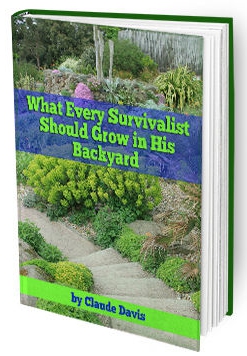
Square foot gardening for Preppers
The square foot gardening has been around for years for good reason. In its original format, the size and soil mix are easy to deal with, easy to fit into many lives, and highly productive.
They do have some drawbacks, though. Preppers in particular have some extra thinking to do regarding revitalization. Happily, we have plenty of options when it comes to cost, maintenance, longevity, and size. We just have to be aware of the limitations so we can prepare accordingly.
source : R.Ann Paris

